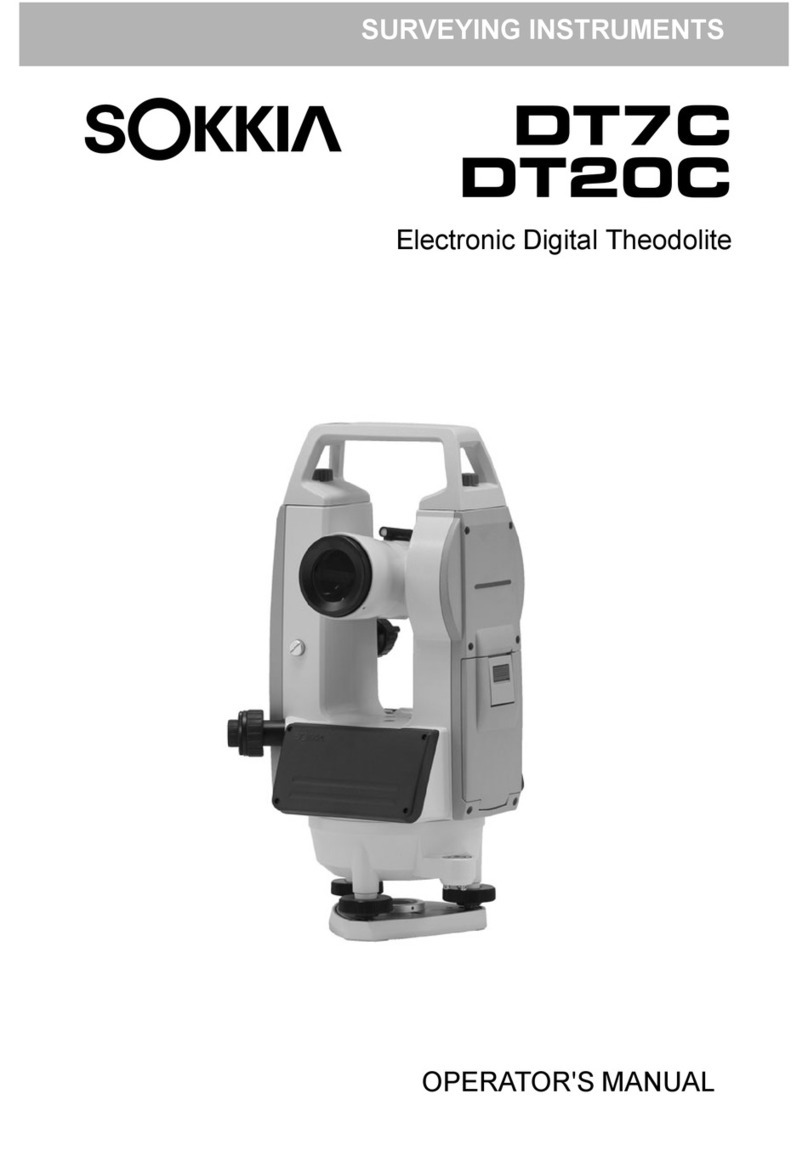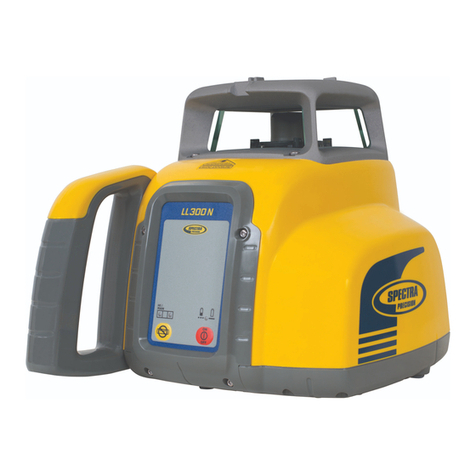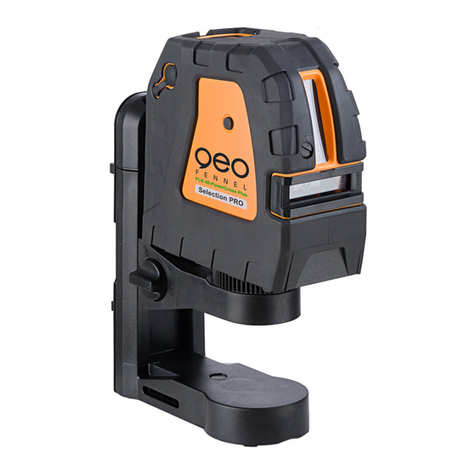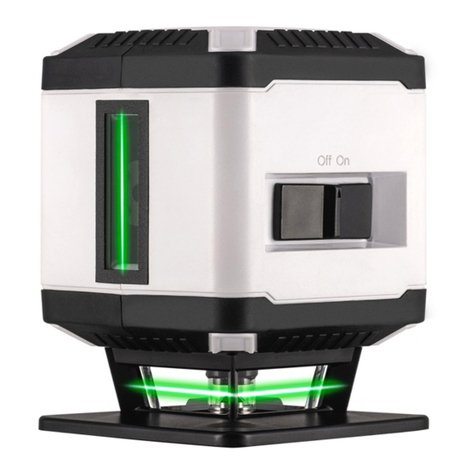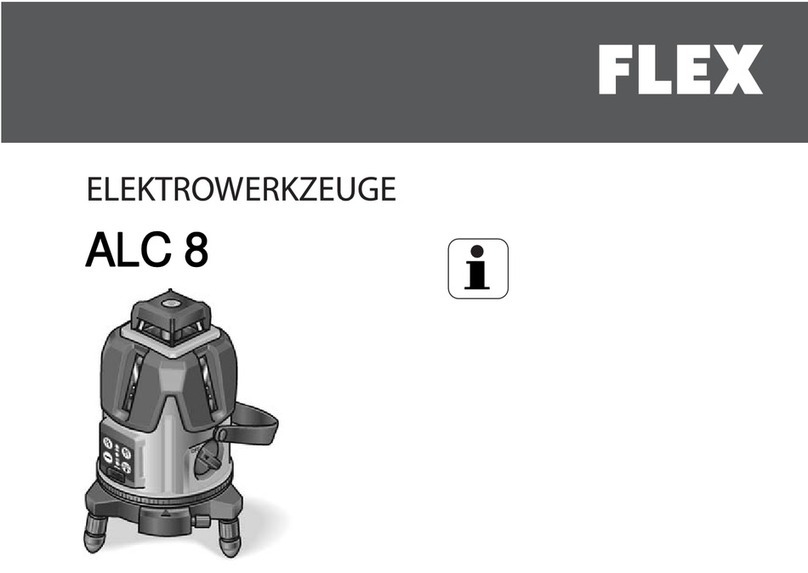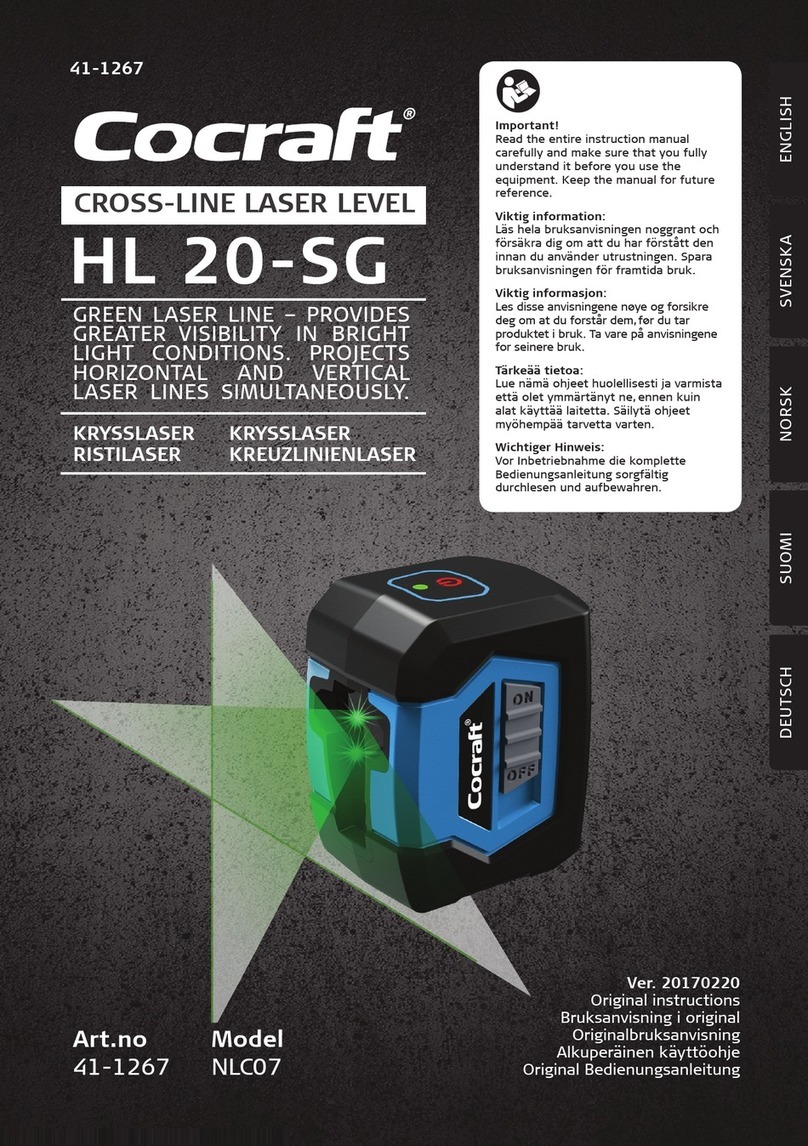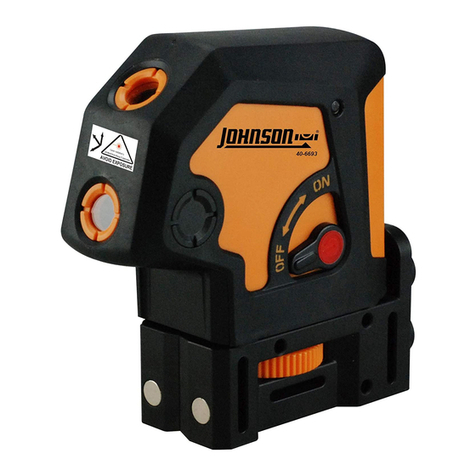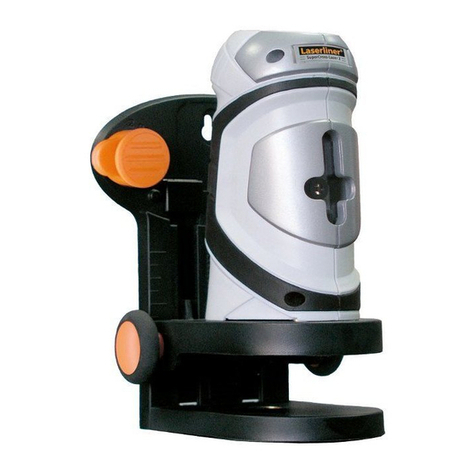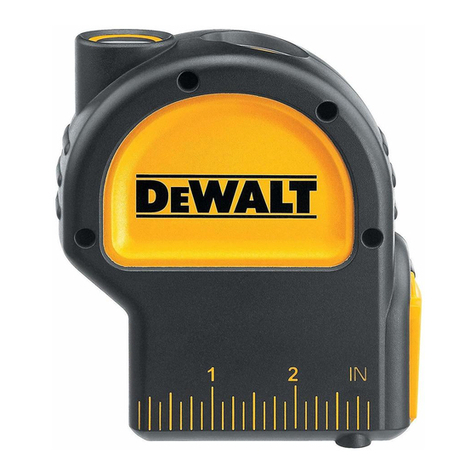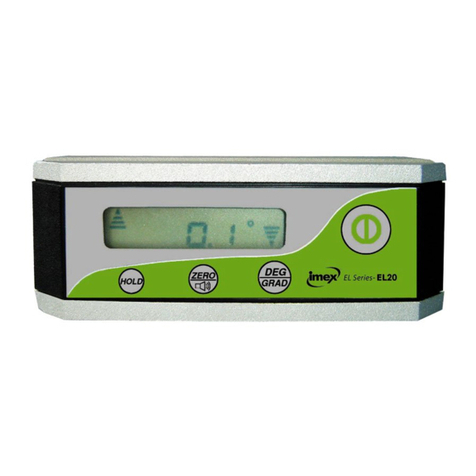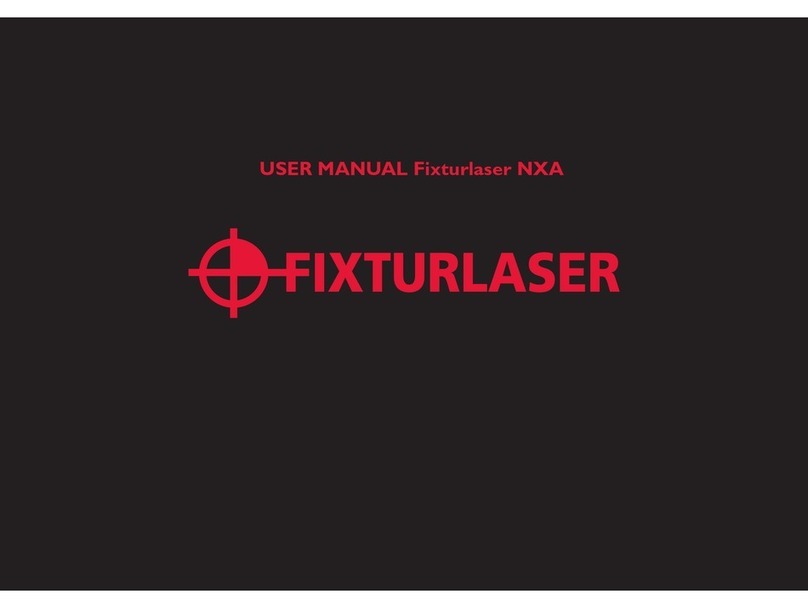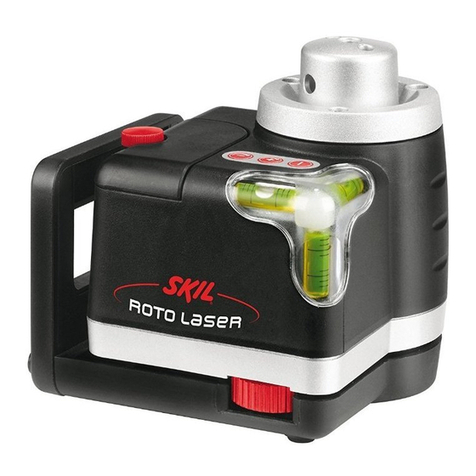AMO 32X User manual

OPTICAL LEVEL
AMO 32X
Operation Manual

2
We recommend that you read this manual carefully before using the instrument for
the rst time.
The level is intended for professional use only. Keep the device out of the reach of
children.
Improper handling of the instrument may damage the instrument or aect measure-
ment accuracy. Do not disassemble or repair the device yourself, do not try to modify it.
If you have any technical problems, please contact your dealer or a service center.
Contents
1. Standard equipment ...............................................................................................................................3
2. Specications .............................................................................................................................................3
3. Device design .............................................................................................................................................4
4. Working with the device ........................................................................................................................5
5. Taking measurements .............................................................................................................................6
6. Checking and adjusting ..........................................................................................................................7
7. Care and storage........................................................................................................................................9

3
1. Standard equipment
A standard set of optical level includes:
• Optical Level - 1 pc.
• Thread plumb bob - 1 pc.
• Adjustment set (hex key, hairpin) - 1 pc.
• Operation manual - 1 pc.
• Transport case - 1 pc.
2. Specications
Standard deviation per 1 km of double stroke 2 mm
Magnication 32 times
Objective diameter 40 mm
Resolution ±0,3”
Angle of view 1°20’
Image Direct
Minimum focal length 0,3 m
Thread Rangender Ratio 100
Moisture and dust protection IPX4
Horizontal circle division unit 1° or 1 gon
Compensator operating range ±15’
Accuracy of the compensator 1,5
Round level division unit 8’/2 mm
Weight 1,4 kg

4
3. Device design
1. Plate
2. Horizontal circle
3. Eyepiece
4. Shroud for adjusting screws of the reticle
5. Lens
6. Focusing screw
7. Precision alignment screw
8. Leveling screw
9. Horizontal circle reference mark
10. Vizier
11. Mirror for observation of a circular level
12. Circular level
13. Compensator lock button

5
4. Working with the device
Fig. 1 Fig. 2
Fig. 3 Fig. 4
Installation and leveling
Place the tripod on a at surface, x the clips A (Fig. 1). Sink the base of the tripod legs
into the ground and set the tripod to the desired height (Fig. 2). Fix the level to a tripod
on the base B using the mounting screw (Fig. 3). Turn the leveling screws until the bub-
ble of the circular level is in the center (Fig. 4).
Aiming and focusing
Using the sight, aim the device at the leveling rod. Rotate the eyepiece to obtain a
clear image of the reticle. Rotate the focusing screw forward or backward to focus farther
or closer, respectively. Using the precision alignment screw, bring the vertical line of the
net to the center of the leveling rod.

6
5. Taking measurements
Installation and leveling
Determination of excess
To determine the excess after aiming at the sta, take a reading along the middle
thread.
Example (see Fig. 5). The device is installed between targets A and B. Aim the device at
target A, the reading value will be equal to a. Aim the instrument at B, read the reading b.
Fig. 5
The value of the excess between targets A and B will be equal to a-b (see Fig. 5).
H = a-b = 1.735-1.224 = 0.511 m
Determining the distance
To measure distances, aim the device at the sta, read o the upper and lower
rangender threads, the unit of measurement is centimeters.
Fig. 6
The distance between the device and the sta will be equal to: L = ([counting on the
upper thread] - [counting on the lower thread]) x 100. Example (see Fig. 6 and 7). Dis-
tance L was 32 cm, therefore the distance from the device to the rail is 32 meters.
Fig. 7

7
Angle measurement
To measure the angle, aim the vertical line of the reticle at target A and read α on the
graduated scale of the horizontal circle. Aim at target B and read β on the dial. As a result,
the sought angle between A and B will be equal to the value of α-β (see Fig. 8).
Fig. 8
6. Checking and adjusting
We make sure that all levels are fully adjusted and ready for use, but nevertheless, the
following checks and adjustments must be made periodically.
Checking and adjusting the circular level
Using the leveling screws, place the bubble in the center of the circular level and
rotate the telescope 180°. The bubble should remain in the center (Fig. 9). Otherwise, it is
necessary to carry out an adjustment.
Fig. 9 Fig. 10
Adjustment is performed as follows: turn the leveling screws until the bubble is half
close to the center of the circular level (Fig. 10).
Then, using a hex wrench, bring the bubble to the center of the circular level by turn-
ing the two adjusting screws (Fig. 11).
Fig. 11

8
Checking and adjusting the angle i
Install two stas A and B (g. 12) at a distance of 30-40 m from each other.
Place the device approximately halfway between A and B. Level the device and take
readings a1 and b1 on stas A and B. The excess between A and B will be Δh = a1 - b1.
Fig. 12
Move the device and place it at a distance of 1-2 m from the sta A (Fig. 13).
Fig. 13
Level the instrument and take readings a2 and b2 on stas A and B, respectively. If the
condition | (a2 - b2) - (a1 - b1) | ≤ 3 mm, no further adjustment required.
Otherwise, do the following: aim the instrument at the B rail and remove the eyepiece
protective casing. Using the adjusting pin, rotate the adjusting screw (g. 14) until the b3
reading on the sta equals b3 = a2 - Δh.
Fig. 14
Repeat all the above steps until the result satises the condition: | (a2 - b2) - (a1 - b1) |
≤ 3 mm.

9
7. Care and storage
Store the device in a clean, dry place. The transport case of the level contains silica gel
to absorb moisture. If it has lost its eectiveness, replace it with a new one.
Do not drop or bump the device. If this happens, you should contact a specialized
service center.
Do not touch the objective lens and eyepiece. Wipe the optical surfaces periodically
with a clean, soft tissue. After nishing work, wipe the device dry.

10
Table of contents
